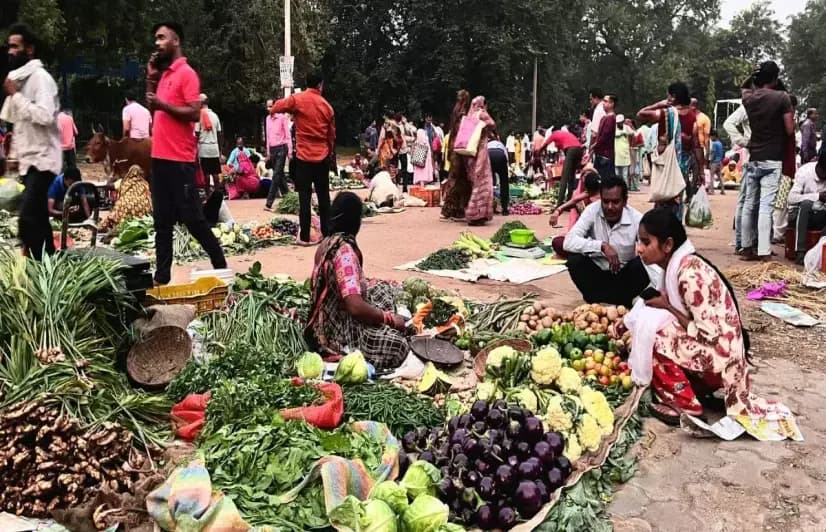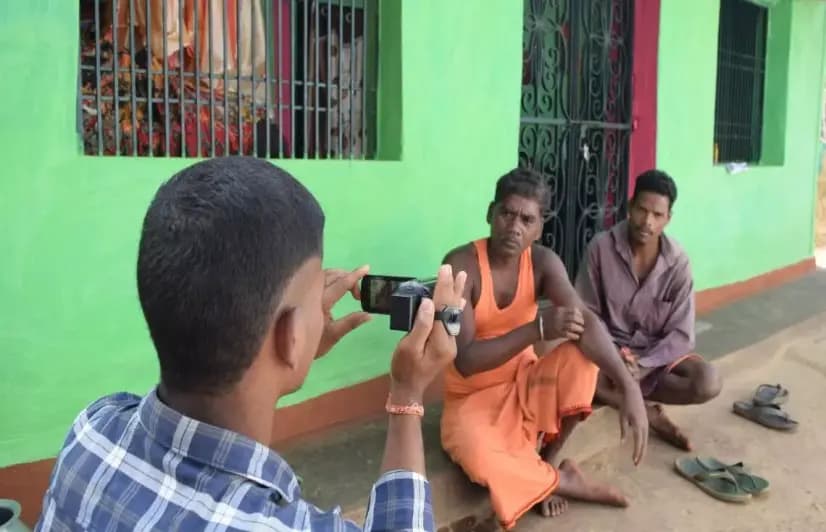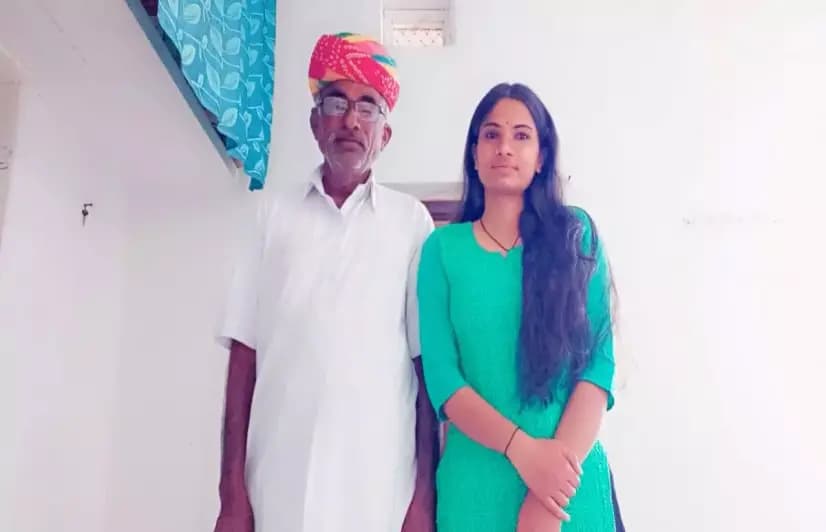Politics play with crop prices in India’s Chhattisgarh state

Politics play with crop prices in India’s Chhattisgarh state
MSP politics in central India’s ‘rice bowl’: Farmers await change of guard Vandana Agrawal Raipur, Chhattisgarh: Among the multiple enticing promises spun by opposition parties ahead of Chhattisgarh assembly elections, the one about raising the minimum support price (MSP) for paddy, has rekindled hopes among the farming community. Congress president Rahul Gandhi focussed on farmers’ issues during his campaign run across the state, promising to increase the MSP of paddy to Rs 2,500/quintal. Former Chief Minister Ajit Jogi, whose Janata Congress Chhattisgarh (JCC) party has contested its first state elections, also pledged in his manifesto to hike MSP of paddy upto Rs 2,600/quintal. Even Aam Aadmi Party (AAP), which contested its first assembly polls in Chhattisgarh this time, promised to hike the MSP to Rs 2,600 per quintal. “Five years ago, BJP had promised to hike MSP of paddy to Rs 2,100 [per quintal]. But they never fulfilled this promise. We have faith that the new government will give Rs 2,500 [per quintal] MSP as they have promised. Nobody is selling paddy in our village,” says Roshan Tarak, 36, a farmer from Chandi, Abhanpur Tehsil. 'Farmers paid Rs 95,136 cr in 15 years’ Chandrashekhar Shukla, president of State Kisan Congress, believes it is a farmers’ right to decide when they want to sell their crop - “The farmers have taken token from purchase centres, but are not selling their paddy. Festivals of Dussehra and Diwali have also passed. Clearly, the farmers are not in a hurry to sell their paddy.” Brijmohan Agrawal, Agriculture Minister in the incumbent BJP government, denies that paddy farmers in Chhattisgarh are in distress - “In comparison to first three years (after the state was formed), in 15 years of BJP rule, more than four times paddy has been bought from farmers, while they were paid nine times more. Over the last 15 years, 7.53 crore metric tonne of paddy has been purchased from farmers and they have been paid Rs 95,136 crore, out of which Rs 9,712 crore has been paid as bonus.” However, Jeevanlal Bhardwaj, member of State Policy Commission and an economist, shares a varying insight. He says the share of farming and allied sectors in 2004-05, a year after Raman Singh took charge as CM, was 21.2 percent in the GDP, but it dwindled down to 15.2 percent in 2016-17. “This is enough to state the condition of farming in Chhattisgarh,” Bhardwaj says. If the sentiments of the farming community in the state, including paddy farmers, are considered, the ruling government looks set to be replaced. Will the next chief minister be able to raise paddy’s MSP upto Rs 2,500 per quintal, above the Centre’s rate, and how effective would it be in providing relief to Chhattisgarh’s farmers? The trend political parties follow in setting MSP of various crops, has been that the period before elections witnesses a higher raise than others. Before the 2009 Lok Sabha elections, the UPA government hiked the MSP for paddy by Rs 155/quintal to Rs 900/quintal, a 20.8 percent hike, and further by Rs 80 in 2009-10, an 8.88 percent hike. The following years saw paddy’s MSP go up by 0 percent, 8 percent and 6.5 percent. Before the 2013 assembly elections, the Raman Singh-led BJP government promised a 100 percent hike, but could only add a minimal 5 percent hike every year; this year, a Rs 200/quintal raise was announced in July, taking the MSP up to Rs 1,750/quintal. The state government added a bonus of Rs 300/quintal, which it said would be deposited directly in farmers’ bank accounts along with the price. The government’s extended selling process is not much of a motivation for farmers, says Rupan Chandrakar, 65, a farmer from Parsada, another village in Abhanpur tehsil. “Farmers sold paddy, but were not paid a bonus for three years,” he says, adding that now with elections, farmers were paid a 2017-18 bonus this year. Districts like Raipur, Durg, Dhamtari, Mahasamund, Janjgir-Champa, Raigarh and Bilaspur have the highest land area for paddy cultivation. Politically significant, these districts encompass 39 of the state’s 90 assembly constituencies - appeasing paddy farmers has been a major part of election campaigning. ‘Premium paddy needs better pricing’ Considered the rice bowl of central India, Chhattisgarh is home to about 43 lakh paddy farmers, who cultivate a rich diversity of more than 23,000 varieties of paddy. Dr A K Sarawagi of the Raipur-based Indira Gandhi Krishi Vidyalaya (IGKV), a research and education organisation working for upliftment of farmers’ livelihoods, says, “The MSP is decided based on grain-type and there is a slight difference between the prices of fine grain and coarse grain.” However, since the government does not purchase premium paddy in the state, it does not have a fixed selling rate, and in turn, farmers produce lesser of these varieties. Some farmers, however, prefer dealing with the open market where demand for indigenous varieties of paddy, that takes longer to mature, exists. Scented varieties like Dubraj, Jawaphool, Jeeraphool and Kallimoonch, which are smaller in size but have a distinct flavour, are predominantly grown in Dhamtari, Mahasamund and some parts of Bastar. Talking about what the next government in Chhattisgarh can do for paddy farmers, Sarawagi says the ensuing government can develop a state policy to procure premium rice at better prices. “Farmers in the state have been voicing this concern that the rates of premium varieties should be fixed according to the superior grain quality. Like Basmati provides them high return in market, the state can also devise a better MSP for premium quality paddy,” he adds. Rajesh Chandravanshi, joint director at the Agriculture department, Chhattisgarh government, says that the government procures around 70 percent of seasonal produce of paddy. While 60 lakh metric tonne of paddy was procured last year, the target this year is to procure 75 lakh metric tonne. Chandravanshi adds that farmers do benefit from selling their paddy to the government, as the rate is higher than the market price. The MSP of paddy has increased over 10 times in the last two decades, which has led to private grain markets suffering losses. This has also increased the management cost of the Food Corporation of India, which procures, stores and distributes the grains. Often, the reserve grains with FCI have been more than the required buffer stock, resulting in higher storage costs and blown up subsidies. If the past is any indication, it is evident that procurement is generally beneficial to farmers with medium and high land holding, of at least five acres or more. The government procures a maximum of 15 quintal from a farmer and those with higher yields, distribute the produce among family members, or give out portions of it as remuneration to landless labourers who work their fields. While the incomes of farmers with large land holding go up to lakhs, those with marginal land hardly cover the cost of production, given the loans they borrow to invest initially. As research papers on MSP and its impact on improving the status of agriculture have pointed out, the governments also need to consider non-price factors such as provision of necessary infrastructure and reduction in operating costs of the FCI to increase its efficiency. [ends] -With inputs from K N Kishore and Suneet Shukla
Would you like to Support us
101 Stories Around The Web
Explore All News
Jun 11
‘’मलेरियाने माझा मुलगा अन् नवरा बी मेला’’... गडचिरोलीमध्ये तापमान बदलाचा आणि डासांचा काय आहे संबंध?

Jun 11
ओडिशा : जलवायु चुनौतियों से निबटने मैंग्रोव संरक्षण के कार्य में जुटी महिलाओं की कहानी
-5.webp&w=3840&q=75)
Mar 27
A Painful Period In The Salt Pans Of Little Rann Of Kutch
-13.webp&w=3840&q=75)
Mar 27
Madhya Pradesh: Where is Our Free Time?

Feb 02
Dilemma Faced By Poor Farmers In Bundelkhand: Grow Organic While Selling Non-Organic

Feb 02
Giridih saves its village ponds with NITI Aayog's help

Jul 29
Odisha students use mobile cameras and pens to preserve village history
-18.webp&w=3840&q=75)
Jul 29
Rajasthan: Fasal Bima Yojana and the Art of Minimising Payouts
-16.webp&w=3840&q=75)
May 25
Waste to wealth: Bhopal district panchayat spends Rs 75,000 per month to earn just Rs 4.5 lakh a year

May 10
A Victory For Unmarried Rajasthani Women As Anganwadi Positions Open For Them
About the Reporter
Top stories by Vandana Agrawal



Write For 101Reporters
Would you like to Support us
Follow Us On
.webp&w=3840&q=75)

